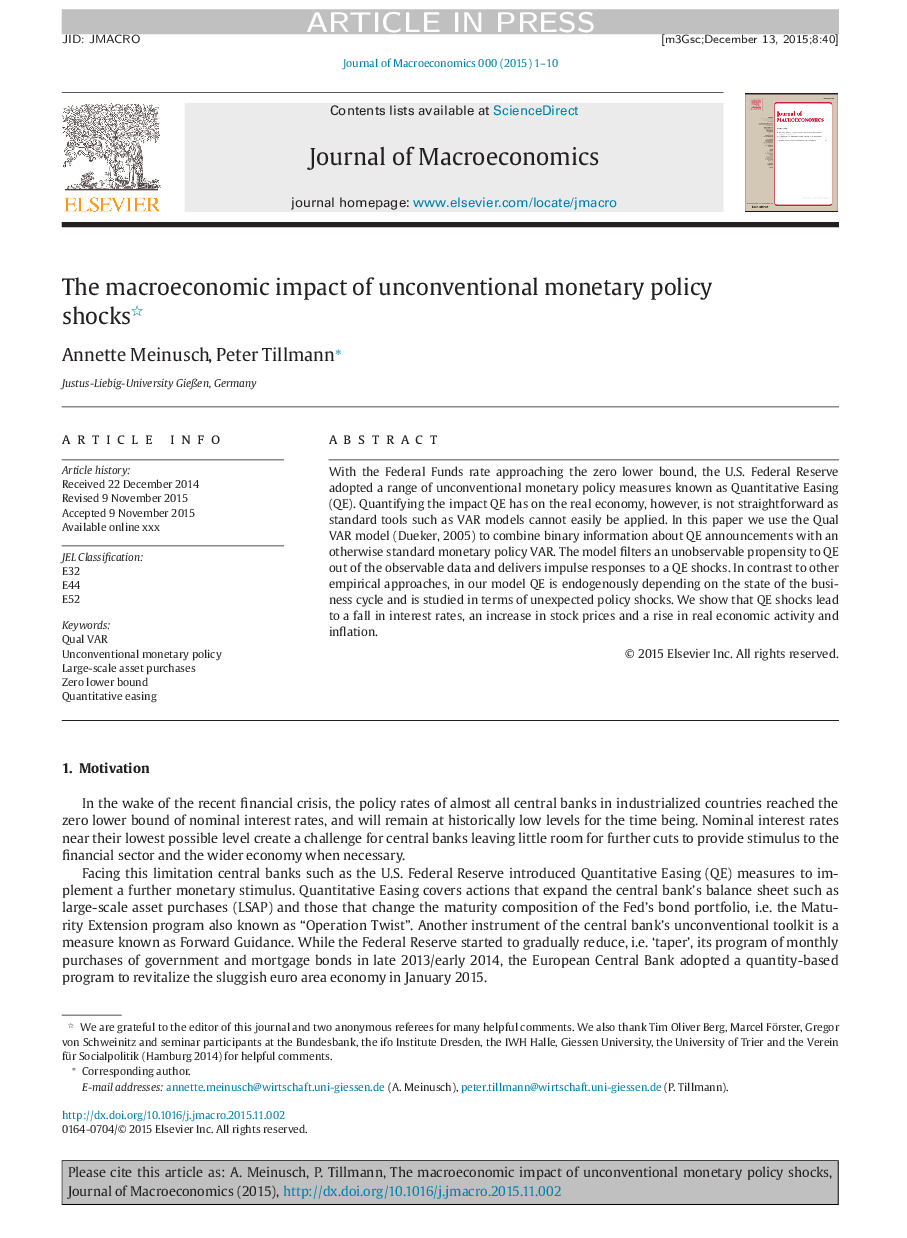| Article ID | Journal | Published Year | Pages | File Type |
|---|---|---|---|---|
| 965207 | Journal of Macroeconomics | 2016 | 10 Pages |
Abstract
With the Federal Funds rate approaching the zero lower bound, the U.S. Federal Reserve adopted a range of unconventional monetary policy measures known as Quantitative Easing (QE). Quantifying the impact QE has on the real economy, however, is not straightforward as standard tools such as VAR models cannot easily be applied. In this paper we use the Qual VAR model (Dueker, 2005) to combine binary information about QE announcements with an otherwise standard monetary policy VAR. The model filters an unobservable propensity to QE out of the observable data and delivers impulse responses to a QE shocks. In contrast to other empirical approaches, in our model QE is endogenously depending on the state of the business cycle and is studied in terms of unexpected policy shocks. We show that QE shocks lead to a fall in interest rates, an increase in stock prices and a rise in real economic activity and inflation.
Keywords
Related Topics
Social Sciences and Humanities
Economics, Econometrics and Finance
Economics and Econometrics
Authors
Annette Meinusch, Peter Tillmann,
